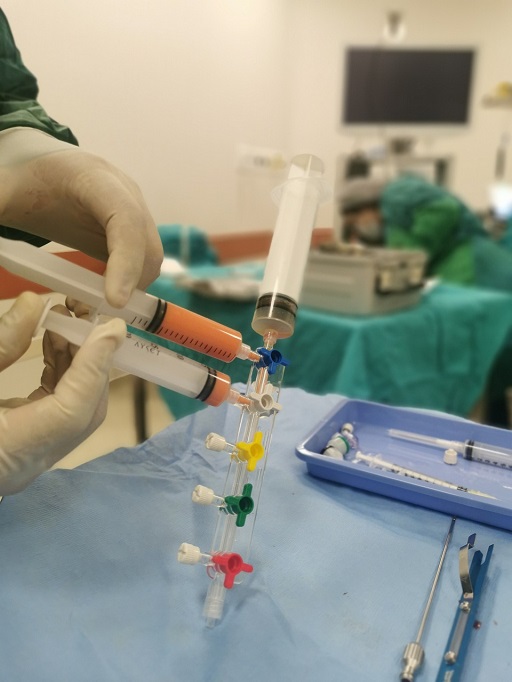Are you curious about the latest advancements in medical science? Have you heard about stem cell therapy and wondered how long does stem therapy last? Well, you’re in luck! In this blog post, we will delve into the fascinating world of stem cell therapy and explore just how long its benefits can endure.
Whether you’re seeking relief from a specific condition or simply interested in the potential of regenerative medicine, join us on this insightful journey as we uncover the mysteries behind the duration of stem therapy. Get ready to be amazed by what these tiny cells can achieve! So, without further ado, let’s dive right in and discover all there is to know about how long does stem therapy last.
Table of Contents
The History of Stem Cell Therapy
Stem cell therapy is a cutting-edge medical treatment that has gained significant attention in recent years. But did you know that the history of stem cell therapy dates back several decades?
The roots of stem cell research can be traced back to the 1960s, when scientists first discovered these remarkable cells and began exploring their potential. However, it wasn’t until the late 1990s that a breakthrough discovery was made by Dr. James Thomson at the University of Wisconsin-Madison.
Dr. Thomson successfully isolated and cultivated human embryonic stem cells for the first time, opening up a world of possibilities for medical researchers and clinicians alike. This groundbreaking achievement paved the way for further advancements in stem cell therapy.

Since then, numerous studies have been conducted to investigate the therapeutic potential of various types of stem cells – from embryonic stem cells to adult-derived stem cells and even induced pluripotent stem cells (iPSCs). These studies have shown promising results in treating a wide range of conditions such as spinal cord injuries, heart disease, diabetes, and neurodegenerative disorders.
Today, researchers continue to explore new avenues for utilizing stem cells in regenerative medicine. The field has come a long way since its inception and holds immense promise for revolutionizing healthcare as we know it.
With ongoing advancements in technology and an increased understanding of how these incredible cells work, we can expect even more exciting developments on the horizon. The future looks bright for patients seeking innovative therapies through stem cell treatments. But fewer see what is stem cell therapy and how long does stem therapy last.
What is Stem Cell Therapy?
Stem cell therapy is a revolutionary medical treatment that harnesses the power of stem cells to promote healing and regeneration within the body. But what exactly are stem cells? Well, they are unique cells with the remarkable ability to develop into different types of specialized cells in our bodies. These incredible little building blocks have the potential to repair damaged tissues, reduce inflammation, and restore functionality.
The process begins by extracting either autologous (from your body) or allogeneic (from a donor) stem cells. Autologous stem cell therapy involves harvesting these cells from your bone marrow or adipose tissue, while Allogeneic stem therapy uses donated optimal umbilical cord blood.
Once extracted, these potent stem cells are carefully processed and then introduced into your body through various methods such as injections or infusions. Once inside, they get to work – targeting injured areas and releasing growth factors that stimulate new tissue growth.
Stem cell therapy has gained considerable attention for its potential in treating a wide range of conditions including orthopedic injuries, neurological disorders like spinal stenosis and multiple sclerosis, autoimmune diseases like rheumatoid arthritis, and even chronic pain management.
As an innovative regenerative medicine approach, it offers hope for individuals seeking alternative treatments beyond traditional therapies. However, it’s essential to understand both the benefits and risks associated with this cutting-edge field before embarking on this medical journey.
Intrigued? Let’s delve deeper into understanding the types of stem cell therapy and how long does stem therapy last.
Benefits and Risks of Stem Cell Therapy

Stem cell therapy has gained significant attention in recent years for its potential to treat a wide range of medical conditions. One of the key advantages of this innovative treatment approach is that it harnesses the regenerative power of stem cells to promote healing and tissue repair within the body.
One major benefit of stem cell therapy is its versatility. Stem cells can differentiate into various cell types, which means they can potentially be used to regenerate damaged or diseased tissues in different parts of the body. This makes them attractive for treating conditions such as spinal cord injuries, heart disease, arthritis, and even neurological disorders like Parkinson’s disease.
Moreover, stem cell therapy offers a promising alternative for patients who may not respond well to traditional treatments or medications.

While offering exciting possibilities for medical advancements, stem cell therapy comes with both benefits and risks that need careful consideration.
One key benefit of stem therapy is its effectiveness in promoting tissue repair. Stem cells have the unique ability to differentiate into specialized cells that make up different tissues in the body. This means they can be used to replace damaged or diseased cells, aiding in the regeneration process.
Additionally, stem cell therapy has shown promise in treating chronic pain conditions such as spinal stenosis. By injecting stem cells directly into affected areas, it is believed that they can reduce inflammation and stimulate healing, providing long-term relief for patients.
Another area where stem therapy holds immense potential is in regenerative medicine. It has been successfully used for repairing damaged heart tissue after a heart attack, improving cardiac function and quality of life for patients.
Moreover, researchers are exploring the use of stem cells to treat neurodegenerative disorders like Parkinson’s disease or Alzheimer’s disease by replacing lost neurons or stimulating their growth.
Furthermore, autoimmune diseases such as multiple sclerosis may also benefit from stem cell therapy. These conditions arise when the immune system mistakenly attacks healthy cells; however, by regulating immune activity through stem cell trophic factors, symptoms can be alleviated.
So, without further ado, let’s dive right in and discover all there is to know about how long does stem therapy last.
Factors That Affect How Long Does Stem Therapy Last
When it comes to stem cell therapy, the duration of treatment can vary from person to person. Several factors can influence how long an individual may undergo stem cell therapy.
First and foremost, the type of condition being treated plays a significant role in determining the duration of therapy. Some conditions may require only a single session or a few sessions spread out over weeks or months. Other more complex conditions might necessitate multiple sessions over an extended period.

The severity and stage of the condition also impact how long one may receive stem cell therapy. Early-stage conditions typically respond better to treatment and may require less time compared to advanced-stage diseases.
Additionally, each patient’s unique biology and response to treatment play a crucial role in determining the length of therapy required. Factors such as age, overall health, immune system function, and genetics all contribute to how well someone responds to stem cell therapy.
Moreover, the specific type of stem cell therapy used can affect its duration. Autologous therapies involve using a patient’s cells, which typically have shorter treatment periods compared to allogeneic therapies that use donor cells.
Success Stories and Realistic Expectations
A lot of patients are worried about how long does stem therapy last! When it comes to stem cell therapy, success stories abound. Many patients have experienced significant improvements in their conditions after undergoing this innovative treatment. From spinal stenosis to joint pain, stem therapy has shown promising results in a variety of medical conditions.
One success story involves a patient named John who had been suffering from chronic knee pain for years. After trying various treatments with limited success, he decided to explore the potential benefits of stem cell therapy. Following the procedure, John noticed a gradual reduction in his pain and an increase in his mobility. Over time, he was able to resume activities that were once impossible for him.

Stem therapy can provide relief and improvement but does not always result in complete healing or permanent cure. While some individuals may experience significant long-term benefits from just one session of stem cell therapy, others may require multiple sessions or ongoing maintenance treatments.
Factors such as age, overall health condition, severity of the condition being treated, and individual response all play a role in determining how long does stem therapy last for each patient.
FAQ – How long does stem therapy last?
As with any medical treatment, the duration of stem cell therapy can vary depending on several factors. While some patients may experience immediate benefits, others may require multiple sessions or ongoing maintenance treatments to achieve optimal results. It is important to consult with a qualified healthcare professional who specializes in regenerative medicine to determine the most appropriate treatment plan for your specific condition.
Here are some frequently asked questions about how long does stem therapy last?
How many sessions of stem cell therapy will I need?
How long does stem therapy last? The number of sessions required varies depending on the individual’s condition and response to treatment. Some patients may only need one session, while others may require multiple sessions spread out over several months.
How often do I need to have follow-up appointments?
Follow-up appointments are an essential part of any stem cell therapy journey. These appointments allow your healthcare provider to monitor your progress, make any necessary adjustments to your treatment plan, and address any concerns or questions you may have.
Will I see immediate results after stem cell therapy?
While some individuals notice improvements shortly after their first session, it is more common for changes to occur gradually over time as the body heals and regenerates tissue. Patience is key when undergoing this type of treatment.
Can stem cell therapy provide permanent relief?
Stem cell therapy has shown promising long-term results for certain conditions; however, it is important to note that each case is unique. The longevity of relief depends on various factors such as the severity of the condition being treated and how well an individual responds to the treatment.
Are there any risks or side effects associated with stem cell therapy?
Like any medical procedure, there are potential risks and side effects associated with stem cell therapy; however, they tend to be minimal compared to traditional surgical interventions. Common side effects include temporary swelling or discomfort at the injection site. It’s crucial to discuss these considerations thoroughly with your healthcare provider before undergoing stem cell therapy, as they will be able to
How long does stem therapy last?
The duration of the effects of stem cell therapy can vary depending on several factors, including the type of therapy, the specific condition being treated, the patient’s response to the treatment, and the quality of the procedure.
